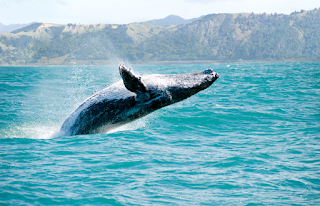Whales And Its Representative Species

We all know that whales are the largest water inhabitants living on the earth. Despite living in the water, they need to air breathe just like humans. Blowholes located on top of their head makes them breathe in. They can live underwater for longer periods of time and retain themselves on krill, crabs, and small fish. Although there are 90 whale representative species. Humpback, beluga, blue whale, fin, bowhead, and North Atlantic right whale are most commonly known. Humpback whales Humpback whales are known for their melody songs. And travel through all the oceans in the world. They regularly propel through the water and land with a tremendous splash. Can grow up to lengths of: between 15 to 19 meters Weight: up to 40 tons Life Span: up to 50 years Gestation Period: 11 months Condition: Least Concern Beluga Whales Belugas are the sociable mammals that feed on shrimps, crabs, and small fish. Their bulbous forehead known as melon is capable of ...
